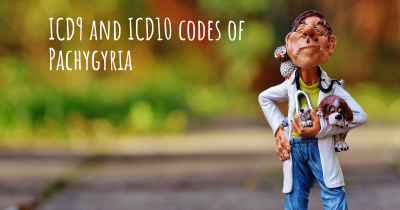What is the prevalence of Pachygyria?
How many people does Pachygyria affect? Does it have the same prevalence in men and women? And in the different countries?

Pachygyria is a rare neurological disorder characterized by abnormal brain development, resulting in a smooth brain surface with broad, shallow folds. The prevalence of pachygyria is not well-established due to its rarity and the lack of comprehensive studies. However, it is considered a rare condition, with only a few hundred cases reported worldwide. Pachygyria can be caused by genetic mutations or brain malformations during fetal development. The condition often leads to developmental delays, intellectual disabilities, and seizures. Early diagnosis and intervention are crucial for managing symptoms and improving the quality of life for individuals with pachygyria.
Pachygyria is a rare neurological disorder characterized by abnormal brain development, specifically affecting the cerebral cortex. It is a type of lissencephaly, where the brain's surface appears smooth instead of having the normal folds and grooves.
The prevalence of pachygyria is difficult to determine precisely due to its rarity and the challenges in diagnosing the condition. However, available medical literature suggests that pachygyria is a relatively uncommon disorder. It is estimated to affect a small fraction of the population, with reported cases ranging from 1 in 25,000 to 1 in 100,000 individuals.
Although pachygyria can occur sporadically, it may also be associated with certain genetic conditions or prenatal factors. The disorder often presents with various neurological symptoms, including developmental delays, intellectual disabilities, seizures, muscle weakness, and impaired motor skills.
Diagnosis of pachygyria typically involves brain imaging techniques such as magnetic resonance imaging (MRI) or computed tomography (CT) scans. Treatment options are limited and primarily focus on managing the symptoms and providing supportive care to individuals affected by the condition.
Given its rarity, pachygyria remains an area of ongoing research to better understand its causes, genetic factors, and potential treatment approaches.








